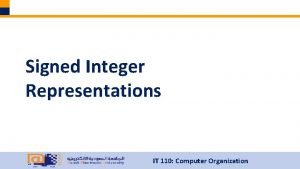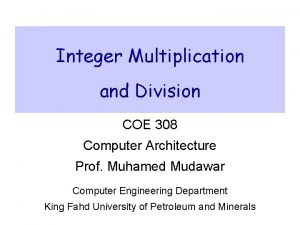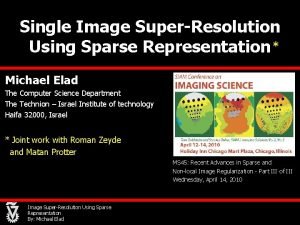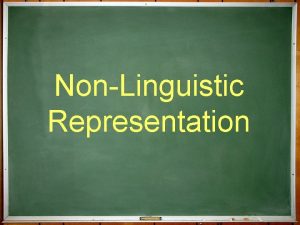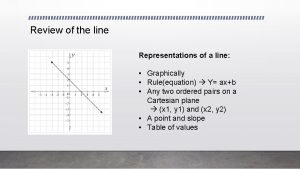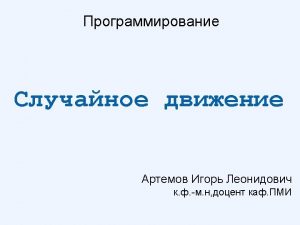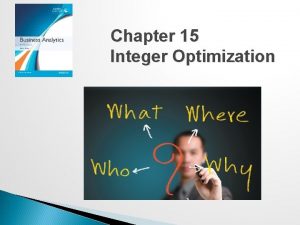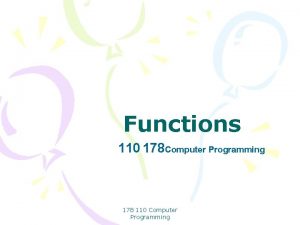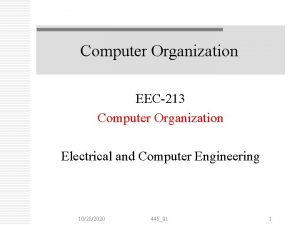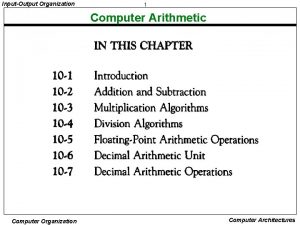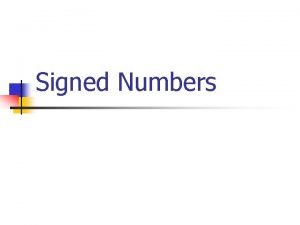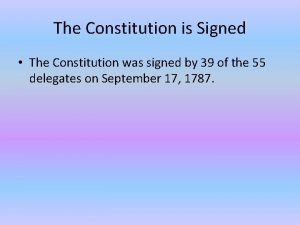Signed Integer Representations IT 110 Computer Organization Signed















- Slides: 15

Signed Integer Representations IT 110: Computer Organization

Signed Integer Representations Positional number arithmetic – Addition, subtraction, multiplication, and division is done by column in base 10. – Example: 28341 -18754 9587 IT 110: Computer Organization

Signed Integer Representations Positional number arithmetic – Addition, subtraction, multiplication, and division is done by column in base 10. – Example: 28341 -18754 9587 This is a “signed magnitude” representation of numbers. Requires complex algorithms to “borrow” from columns. IT 110: Computer Organization

Signed Integer Representations Positional number arithmetic – The same general process can be followed in binary. – Example: 101101001 -0010110001 IT 110: Computer Organization

Signed Integer Representations Positional number arithmetic – The same general process can be followed in binary. – Example: 101101001 -001011000 Still need to “borrow” from columns. 10001 IT 110: Computer Organization

Signed Integer Representations Positional number arithmetic – Negative number representations—all use fixed width fields (i. e. , a 16 - or 32 bit integer) – Simple binary—assumes all numbers are positive 6610 = 010000102 19410 = 110000102 Problem: Can’t represent negative numbers. IT 110: Computer Organization

Signed Integer Representations Positional number arithmetic – Negative number representations—all use fixed width fields (i. e. , a 16 - or 32 bit integer) – Signed magnitude—use most significant bit to represent the sign. 0 is positive, 1 is negative. 6610 = 010000102 -6610 = 110000102 Problem: requires separate addition and subtraction algorithms in CPU hardware. Also, 10000000 is negative zero! IT 110: Computer Organization

Signed Integer Representations Positional number arithmetic – Negative number representations—all use fixed width fields (i. e. , a 16 - or 32 bit integer) – Binary coded decimal—represent each base 10 digit in 4 bits. Use strings of 4 bits (nibbles) to encode a number. 12310 = 0000 0001 0010 0011 -12310 = 1010 0001 0010 0011 Problems: takes more memory; difficult to do arithmetic (forcing a base 2 computer to do base 10 arithmetic) IT 110: Computer Organization

Signed Integer Representations Positional number arithmetic – Negative number representations—all use fixed width fields (i. e. , a 16 - or 32 bit integer) – Two’s complement—an encoding such that the fixed-width bit patterns are divided up into a range of [-2 n-1… 2 n-1 -1] for n-bits, and subtraction is merely addition of a negative number. IT 110: Computer Organization

Signed Integer Representations Constructing a negative number in two’s complement – Form the simple binary (positive) representation of the number. – Flip all the bits (exchange 0’s for 1’s and 1’s for 0’s). – Add 1 to the resulting number. IT 110: Computer Organization

Signed Integer Representations Constructing a negative number in two’s complement – Form the simple binary (positive) representation of the number. – Flip all the bits (exchange 0’s for 1’s and 1’s for 0’s) – Add 1 to the resulting number. Example: Construct -24856 in 16 bit two’s complement. IT 110: Computer Organization

Signed Integer Representations Constructing a negative number in two’s complement – Form the simple binary (positive) representation of the number. – Flip all the bits (exchange 0’s for 1’s and 1’s for 0’s) – Add 1 to the resulting number. Example: Construct -24856 in 16 bit two’s complement. Simple binary 0110 0001 1000 IT 110: Computer Organization

Signed Integer Representations Constructing a negative number in two’s complement – Form the simple binary (positive) representation of the number. – Flip all the bits (exchange 0’s for 1’s and 1’s for 0’s) – Add 1 to the resulting number. Example: Construct -24856 in 16 bit two’s complement. Simple binary 0110 0001 1000 Flip bits 1001 1110 1101 0111 IT 110: Computer Organization

Signed Integer Representations Constructing a negative number in two’s complement – Form the simple binary (positive) representation of the number. – Flip all the bits (exchange 0’s for 1’s and 1’s for 0’s) – Add 1 to the resulting number. Example: Construct -24856 in 16 bit two’s complement. Simple binary 0110 0001 1000 Flip bits 1001 1110 1101 0111 Add 1 1001 1110 1101 1000 IT 110: Computer Organization

Signed Integer Representations Summary – Computers use positional arithmetic. – Choices in representing negative numbers include signed magnitude, binary coded decimal, and two’s complement. – Two’s complement solves several problems: – No “negative zero” representation – Subtraction becomes addition of a negative number, simplifying CPU hardware. IT 110: Computer Organization
 Integers meaning in maths
Integers meaning in maths Où se trouve le numéro d'affiliation mutuelle vignette ?
Où se trouve le numéro d'affiliation mutuelle vignette ? 100 011
100 011 Signed integer representation
Signed integer representation Process organization in computer organization
Process organization in computer organization Basic structure of computer in computer organization
Basic structure of computer in computer organization Computer organization and architecture difference
Computer organization and architecture difference Interrupt cycle flow chart
Interrupt cycle flow chart What is basic computer organization
What is basic computer organization What is multiplicand and multiplier example
What is multiplicand and multiplier example On single image scale-up using sparse-representations
On single image scale-up using sparse-representations Representations of pompeii and herculaneum over time
Representations of pompeii and herculaneum over time Time sequence pattern organizer
Time sequence pattern organizer Generalization graphic organizer
Generalization graphic organizer Unit 1: media representations mark scheme
Unit 1: media representations mark scheme Representations of a line
Representations of a line



